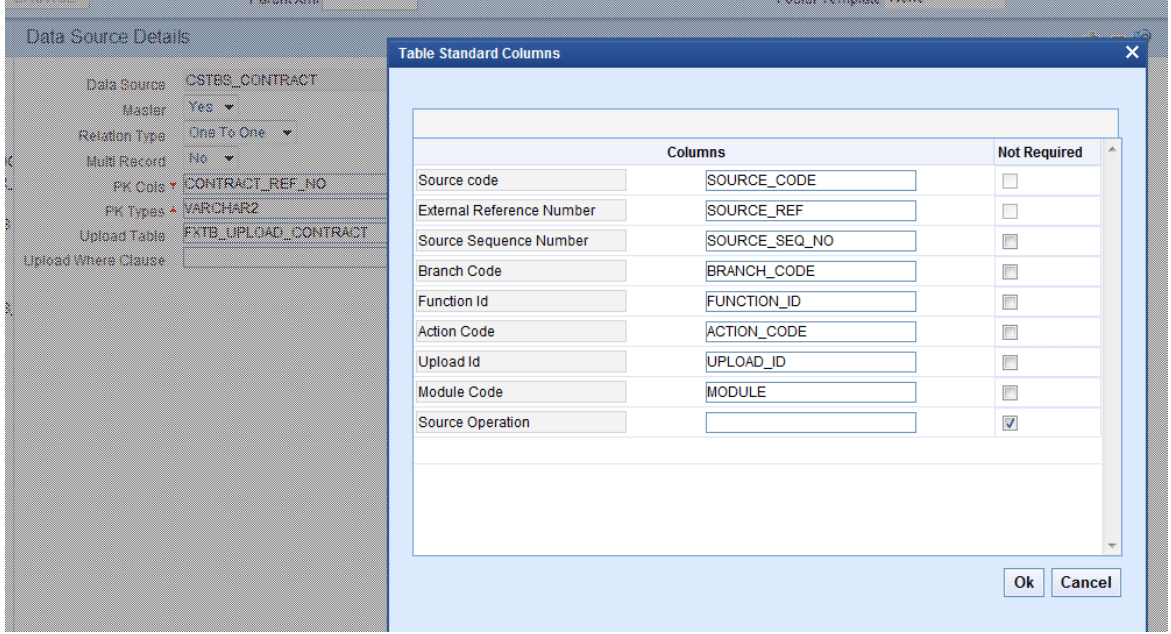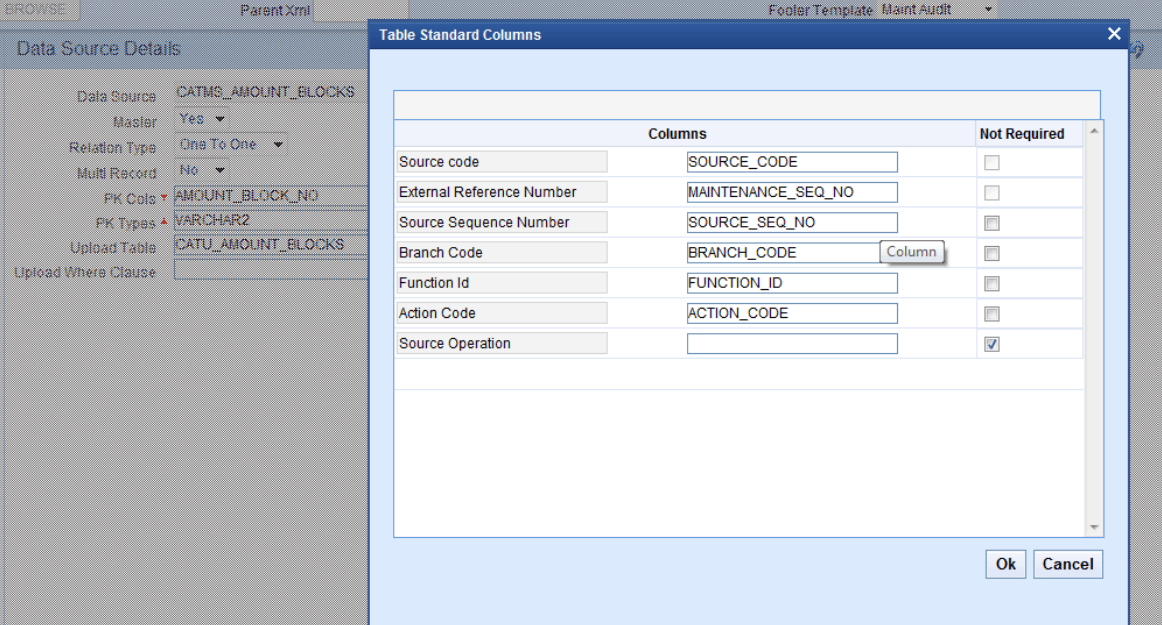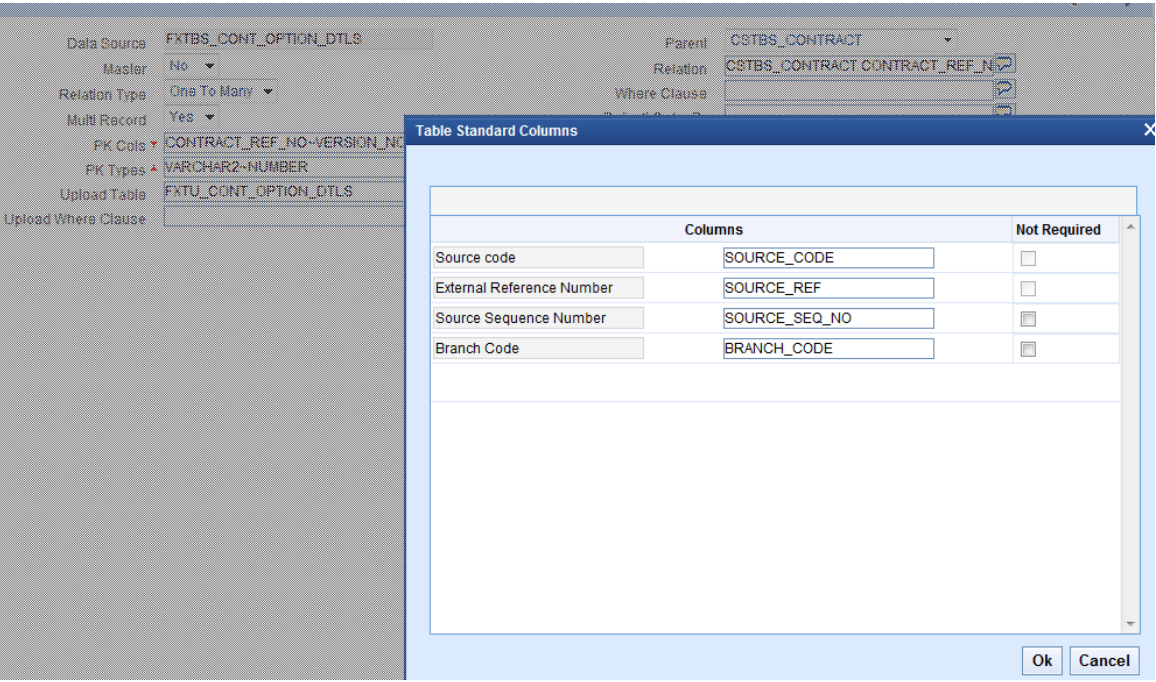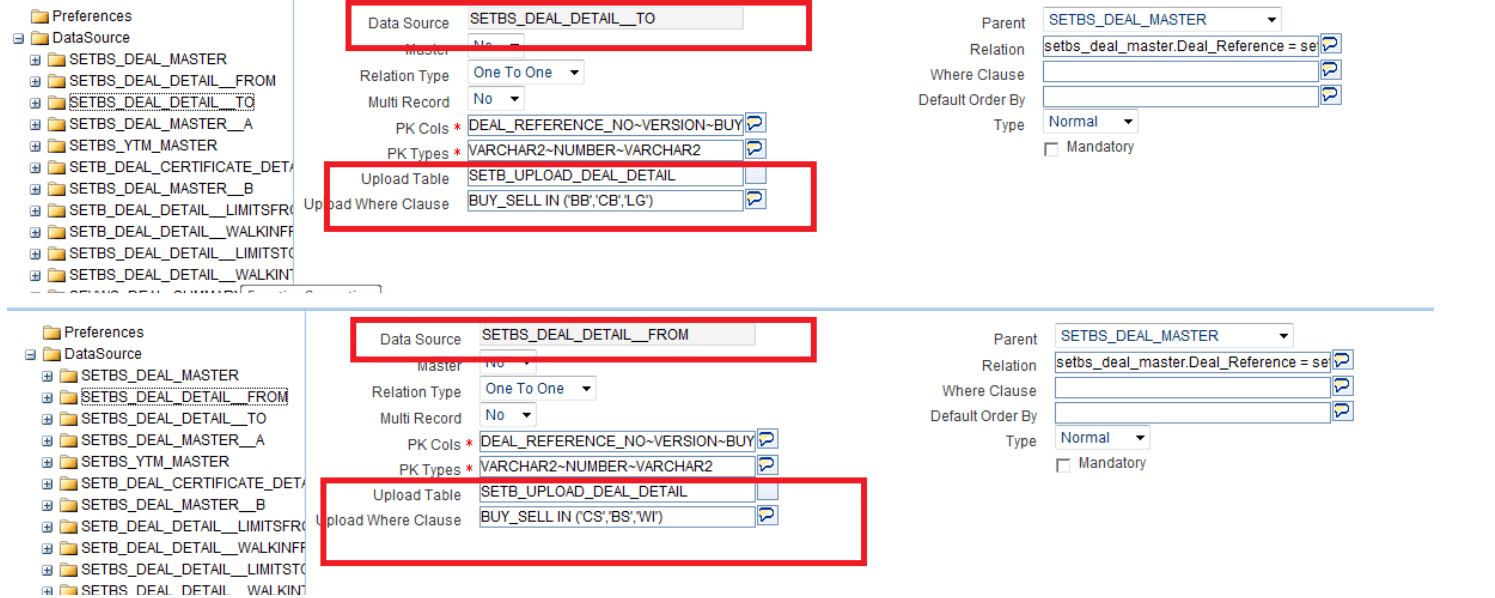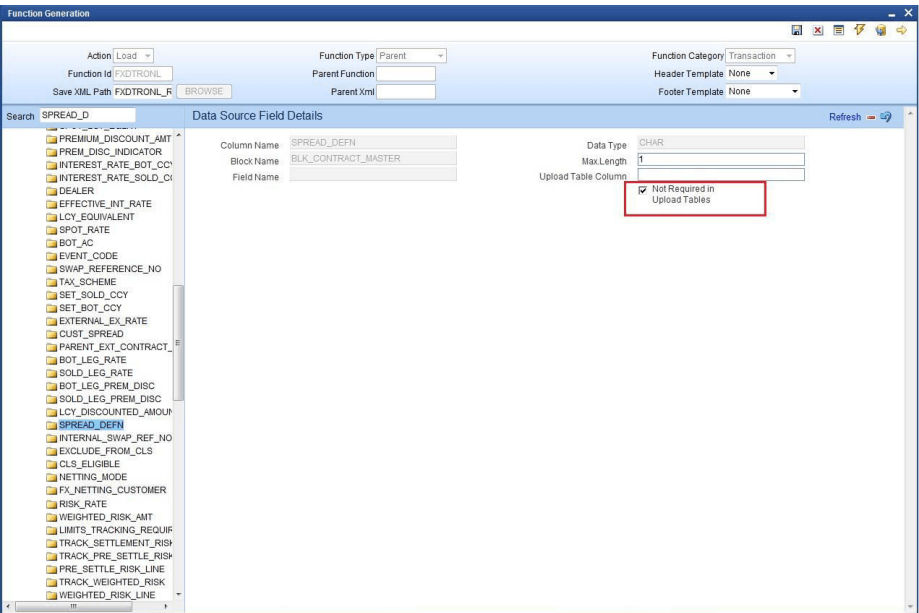2.1 Configuration of Upload Table Details in RADXML
This topic describes the Configuration of Upload Table Details in RADXML.
Upload Table - In the data source definition screen, specify the upload table name for the data source.
Figure 2-1 Data Source Field Details – Upload Table Column
- Avoid providing synonyms in the Upload Table field.
- Upload Tables should be mapped only to Normal Data Sources.
- Click on the button next to the Upload Table to view the standard set of columns for the upload table.
- SOURCE_CODE, SOURCE_REF, SOURCE_SEQ_NO, and BRANCH_CODE will be assumed as part of the primary key of any Upload Table. Make note of the guidelines explained in the previous section while providing the Upload Table Name.
Upload Table Standard Columns - Refer to the previous section for the standard columns which are part of the upload table. Default column names are provided on the screen. Source Operation would be not present in the table by default. The developer can change the column names of the standard columns as desired. This could be useful if existing upload tables are re-used. For example, Name of the column for external reference number can be changed from SOURCE_REF to EXT_REF_NO.
Figure 2-2 Table Standard Columns – Transaction Screen
Figure 2-3 Table Standard Columns – Maintenance Screen
Figure 2-4 Table Standard Columns – Detail Upload Table
Upload Where Clause - If all the records in an Upload Table are not mapped to a particular data source, then the Upload Where Clause can be specified to filter the records. This is applicable only when the data sources involved are not directly related to each other.
Upload Table Where Clause would be applied on the upload table, hence upload table columns should be used in the clause.
Figure 2-5 Upload Where Clause – Multiple Data sources
Upload Table Column - All the data source columns which are included in the RADXML would be assumed to be part of the upload table.
- By default, the name of the Upload Table Column would be assumed to be the same as that of the base table name.
- If the name of the upload table column has to be different from the base table column, then the same has to be explicitly mentioned in Upload Table Column field.
Figure 2-6 Data Source Field Details – Upload Table Column
- Check the Not Required in Upload Tables box to specify if any of the columns included in the data source in RADXML is not required in the upload table.
Figure 2-7 Data Source Field Details – Not Required in Upload Tables
Parent topic: Open Development Tool Capabilities

